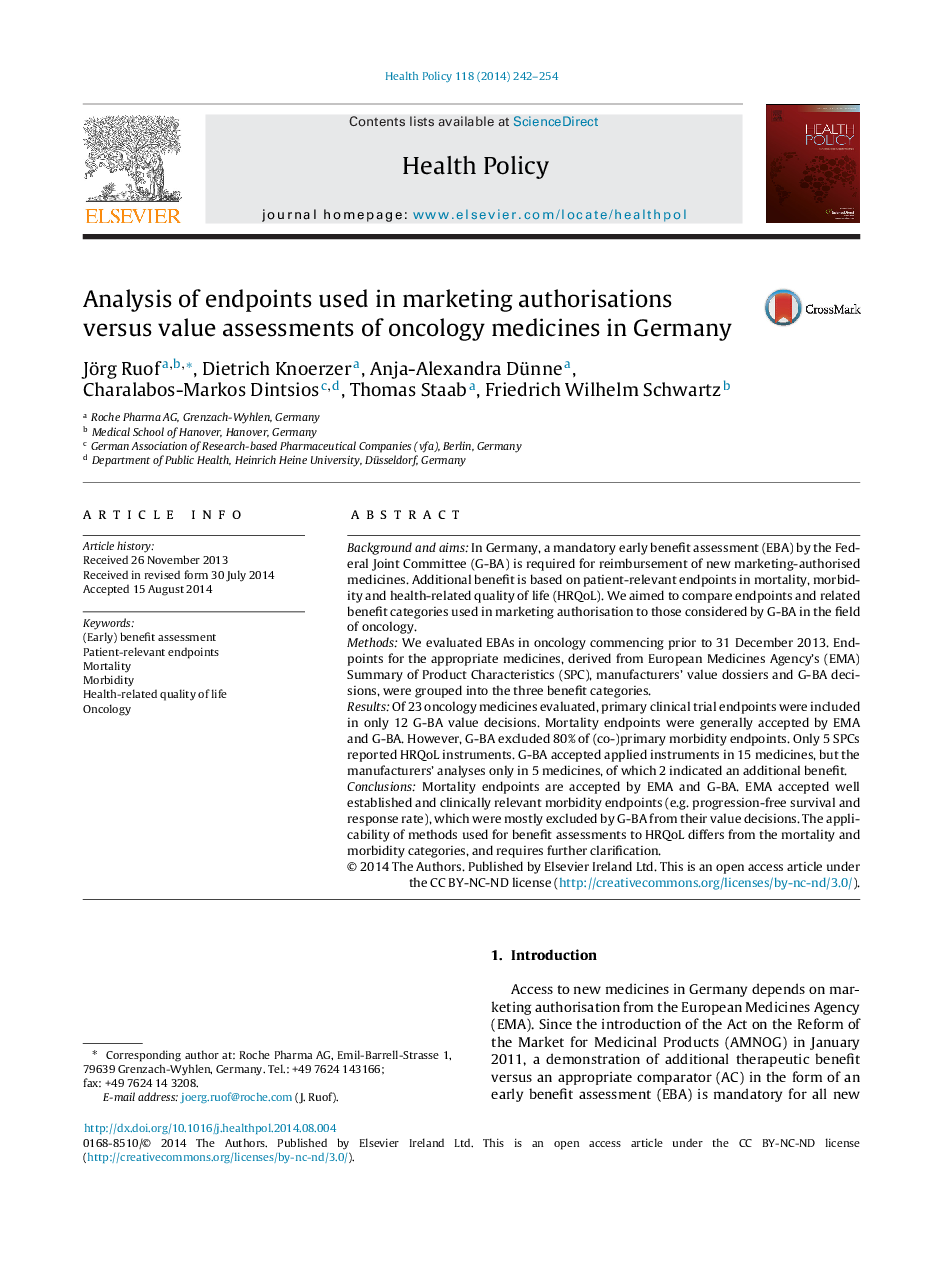| Article ID | Journal | Published Year | Pages | File Type |
|---|---|---|---|---|
| 6239679 | Health Policy | 2014 | 13 Pages |
â¢Different acceptance of oncology endpoints between EMA and G-BA.â¢Mortality endpoints are widely accepted by both EMA and G-BA.â¢Morbidity endpoints are accepted by EMA, but mostly rejected by G-BA.â¢HRQoL endpoints are poorly reflected in SPCs and G-BA evaluation.â¢Specific guidance especially in morbidity and closer alignment of regulatory and HTA needed.
Background and aimsIn Germany, a mandatory early benefit assessment (EBA) by the Federal Joint Committee (G-BA) is required for reimbursement of new marketing-authorised medicines. Additional benefit is based on patient-relevant endpoints in mortality, morbidity and health-related quality of life (HRQoL). We aimed to compare endpoints and related benefit categories used in marketing authorisation to those considered by G-BA in the field of oncology.MethodsWe evaluated EBAs in oncology commencing prior to 31 December 2013. Endpoints for the appropriate medicines, derived from European Medicines Agency's (EMA) Summary of Product Characteristics (SPC), manufacturers' value dossiers and G-BA decisions, were grouped into the three benefit categories.ResultsOf 23 oncology medicines evaluated, primary clinical trial endpoints were included in only 12 G-BA value decisions. Mortality endpoints were generally accepted by EMA and G-BA. However, G-BA excluded 80% of (co-)primary morbidity endpoints. Only 5 SPCs reported HRQoL instruments. G-BA accepted applied instruments in 15 medicines, but the manufacturers' analyses only in 5 medicines, of which 2 indicated an additional benefit.ConclusionsMortality endpoints are accepted by EMA and G-BA. EMA accepted well established and clinically relevant morbidity endpoints (e.g. progression-free survival and response rate), which were mostly excluded by G-BA from their value decisions. The applicability of methods used for benefit assessments to HRQoL differs from the mortality and morbidity categories, and requires further clarification.
